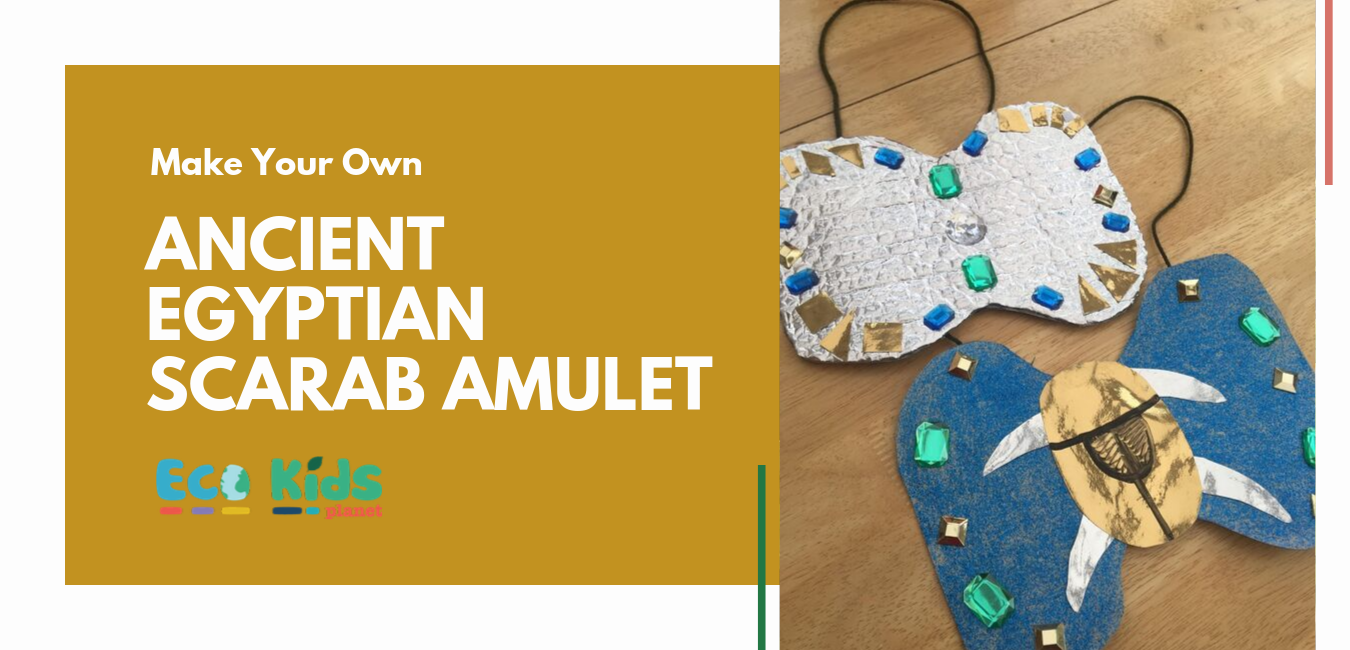Your Cart is Empty
The Egyptian scarab was one of the most sacred amulets in Ancient Egypt. The scarab represented new creation and eternal life and was thought to give protection against evil. These amulets were carved out of stone or moulded in glass or Egyptian ceramic. They were everywhere: worn on necklaces, carved in buildings and used in seals.
Step 1: Draw the shape of your amulet on to the cardboard. Cut this out.
 Step 2: Paint your template using your favourite colour. This may take a couple of layers. Leave to dry.
Step 2: Paint your template using your favourite colour. This may take a couple of layers. Leave to dry.
 Step 3: Use your leftover cardboard to make a leg template, this will ensure all of the beetle’s legs are the same. Draw four legs on to the silver paper, making sure you have two facing left and two facing right. Cut these out.
Step 3: Use your leftover cardboard to make a leg template, this will ensure all of the beetle’s legs are the same. Draw four legs on to the silver paper, making sure you have two facing left and two facing right. Cut these out.
 Step 4: Draw and cut the oval body of the scarab beetle from your gold paper. Use your marker pen to add the beetle’s markings.
Step 4: Draw and cut the oval body of the scarab beetle from your gold paper. Use your marker pen to add the beetle’s markings.
 Step 5: Glue these to the centre of your amulet. They may need something heavy to rest on top for 10 minutes to help glue them into place.
Step 5: Glue these to the centre of your amulet. They may need something heavy to rest on top for 10 minutes to help glue them into place.
 Step 6: Cut out different shapes from your silver and gold paper. Stick these, alongside your gemstones, on to the amulet for decoration. What patterns will you create? Make sure you leave this to dry completely.
Step 6: Cut out different shapes from your silver and gold paper. Stick these, alongside your gemstones, on to the amulet for decoration. What patterns will you create? Make sure you leave this to dry completely.
 Step 7: Cut your string to approximately 30cm. Secure this to the back of your amulet with sticky tape. Ta-da! You’re all done! Don’t you look fantastic wearing your new amulet?
Step 7: Cut your string to approximately 30cm. Secure this to the back of your amulet with sticky tape. Ta-da! You’re all done! Don’t you look fantastic wearing your new amulet?
Comments will be approved before showing up.

We received so many fantastic entries to our Time-Travelling Animal Adventure competition – thank you to everyone who took part! We loved seeing your creative ideas, colourful drawings and exciting stories. From racing dinosaurs to rescuing baby pterodactyls, your time-travel tales truly brought the past to life.

Test your tusk knowledge with our fun Tusk Titans Quiz! From woolly mammoths and vampire deer to walruses and warthogs, see how many tusked creatures you can name. Perfect for curious kids who love wildlife – play now and become a tusk expert in the making! Want to explore more? Discover the ...
Can Fake Tusks Help Save Real Animals? Synthetic ivory – a man-made material that looks and feels like real tusk – is sparking big conservation questions. Could it stop poaching and protect elephants, or might it make ivory seem more acceptable again? We've put together the facts below – and we're a...

